|
| |
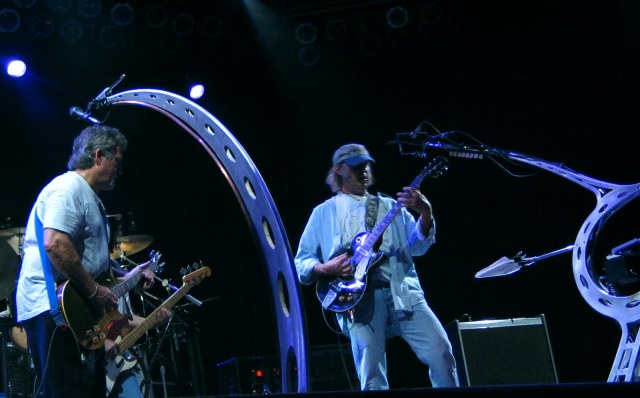
After Neil Young left the Californian folk-rock band Buffalo Springfield in 1968, he
slowly established himself as one of the most influential and idiosyncratic
singer/songwriters of his generation. Young's body of work ranks second only to Bob Dylan
in terms of depth, and he was able to sustain his critical reputation, as well as record
sales, for a longer period of time than Dylan, partially because of his willfully perverse
work ethic. From the beginning of his solo career in the late '60s until the late '90s, he
never stopped writing, recording, and performing; his official catalog only represented a
portion of his work, since he kept countless tapes of unreleased songs in his vaults. Just
as importantly, Young continually explored new musical territory, from rockabilly and the
blues to electronic music. But these stylistic exercises only gained depth when compared
to his two primary styles: gentle folk and country-rock, and crushingly loud electric
guitar rock, which he frequently recorded with the Californian garage band Crazy Horse.
Throughout his career, Young alternated between these two extremes, and both proved
equally influential; there were just as many simpy singer/songwriters as there were grunge
and country-rock bands claiming to be influenced by Neil Young. Despite his enormous
catalog and influence, Young continued to move forward, writing new songs and exploring
new music in his fourth decade as a performing artist. That restless spirit ensured that
he was one of the few rock veterans as vital in his old age as he was in his youth.
Born in Toronto, Canada, Neil Young moved to Winnipeg with his mother following her
divorce from his sports-journalist father. Young began playing music in high school. Not
only did he play in garage rock outfits like the Esquires, but he also played in local
folk clubs and coffeehouses, where he eventually met Joni Mitchell and Stephen Stills.
During the mid-'60s, he returned to Toronto, where he played as a solo folk act. By 1966,
he joined the Mynah Birds, which also featured bassist Bruce Palmer and Rick James. The
group recorded a couple of singles for Motown, which were ignored. Frustrated by his lack
of success, Young moved to Los Angeles in his Pontiac hearse, taking Palmer along as
support. Shortly after they arrived in L.A., they happened to meet Stills, and they formed
Buffalo Springfield, who quickly became one of the leaders of the Californian folk-rock
scene. Despite the success of Buffalo Springfield, the group was plagued with tension, and
Young quit the band several times before finally leaving to become a solo artist in May of
1968. Hiring Elliot Roberts as his manager, Young signed with Reprise Records and released
his eponymous debut album in early 1969. By the time the album was released, he had begun
playing with a local band called the Rockets, which featured guitarist Danny Whitten,
bassist Billy Talbot, and drummer Ralph Molina. Young renamed the group Crazy Horse and
had them support him on his second album, Everybody Knows This Is Nowhere, which was
recorded in just two weeks. Featuring such Young staples as "Cinnamon Girl" and
"Down By the River," the album went gold. Following the completion of the
record, he began jamming with Crosby, Stills & Nash, eventually joining the group for
their spring 1970 album, Deja Vu. Although he was now part of Crosby, Stills & Nash,
Young continued to record as a solo artist, releasing After the Gold Rush at the end of
the year. After the Gold Rush, with its accompanying single "Only Love Can Break Your
Heart," established Young as a solo star, and fame only increased through his
association with CSN&Y.
Although Crosby, Stills, Nash & Young were a very successful act, they were also
volatile, and they had split by the spring 1971 release of the live Four Way Street. The
following year, Young had his first number one album with the mellow country-rock of
Harvest, which also featured his first (and only) number one single, "Heart of
Gold." Instead of embracing his success, he spurned it, following it with the noisy,
bleak live film Journey Through the Past. Both the movie and the soundtrack received
terrible reviews, as did the live album Time Fades Away, a record recorded with the Stray
Gators that was released in 1973.
Both Journey through the Past and Time Fades Away signaled that Young was entering a
dark period in his life, but they only scratched the surface of his anguish. Inspired by
the overdose deaths of Danny Whitten in 1972 and his roadie Bruce Berry the following
year, Young wrote and recorded the bleak, druggy Tonight's the Night late in 1973, but
declined to release it at the time. Instead, he released On the Beach, which was nearly as
harrowing, in 1974; Tonight's the Night finally appeared in the spring of 1975. By the
time of its release, Young had recovered, as indicated by the record's hard-rocking
follow-up Zuma, an album recorded with Crazy Horse and released later that year.
Young's focus began to wander in 1976, as he recorded the duet album Long May You Run
with Stephen Stills and then abandoned his partner midway through the supporting tour. The
following year he recorded the country-rock-oriented American Stars 'n Bars, which
featured vocals by Nicolette Larson, who was also prominent on 1978's Comes a Time. Prior
to the release of Comes a Time, Young scrapped the country-rock album Homegrown and
assembled the triple-album retrospective Decade. At the end of 1978, he embarked on an
arena tour called Rust Never Sleeps, which was designed as a showcase for new songs. Half
of the concert featured Young solo, the other half featured him with Crazy Horse. That was
the pattern that Rust Never Sleeps, released in the summer of 1979, followed. The record
was hailed as a comeback, proving that Young was one of the few rock veterans who attacked
punk rock head-on. That fall he released the double album Live Rust and the live movie
Rust Never Sleeps.
Rust Never Sleeps had restored Young to his past glory, but he perversely decided to
trash his goodwill in 1980 with Hawks & Doves, a collection of acoustic songs that
bore the influence of conservative, right-wing politics. In 1981, Young released the heavy
rock album Re*Ac*tor, which received poor reviews. Following its release, he left Reprise
for the fledgling Geffen Records, where he was promised lots of money and artistic
freedom. Young decided to push his Geffen contract to the limit, releasing the electronic
Trans, where his voice was recorded through a computerized vocoder, later that year. The
album and its accompanying, technology-dependent tour were received with bewildered,
negative reviews. The rockabilly of Everybody's Rockin' (1983) was equally scorned, and
Young soon settled into a cult audience for the mid-'80s.
Over the course of the mid-'80s, Young released three albums that were all stylistic
exercises. In 1985, he released the straight country Old Ways, which was followed by the
new wave-tinged Landing on Water the following year. He returned to Crazy Horse for 1987's
Life, but by that time, he and Geffen had grown sick of each other, and he returned to
Reprise in 1988. His first album for Reprise was the bluesy, horn-driven This Note's for
You, which was supported by an acclaimed video that satirized rock stars endorsing
commercial products. At the end of the year, he recorded a reunion album with Crosby,
Stills & Nash called American Dream, which was greeted with savagely negative reviews.
American Dream didn't prepare any observer for the critical and commercial success of
1989's Freedom, which found Young following the half-acoustic/half-electric blueprint of
Rust Never Sleeps to fine results. Around the time of its release, Young became a hip name
to drop in indie rock circles, and he was the subject of a tribute record title The Bridge
in 1989. The following year, Young reunited with Crazy Horse for Ragged Glory, a loud,
feedback-drenched album that received his strongest reviews since the '70s. For the
supporting tour, Young hired the avant-rock band Sonic Youth as his opening group,
providing them with needed exposure while earning him hip credibility within alternative
rock scenes. On the advice of Sonic Youth, Young added the noise collage EP Arc as a bonus
to his 1991 live album, Weld.
Weld and the Sonic Youth tour helped position Neil Young as an alternative and grunge
rock forefather, but he decided to abandon loud music for its 1992 follow-up, Harvest
Moon. An explicit sequel to his 1972 breakthrough, Harvest Moon became Young's biggest hit
in years, and he supported the record with an appearance on MTV Unplugged, which was
released the following year as an album. Also in 1993, Geffen released the rarities
collection Lucky Thirteen. The following year, he released Sleeps With Angels, which was
hailed as a masterpiece in some quarters. Following its release, Young began jamming with
Pearl Jam, eventually recording an album with the Seattle band in early 1995. The
resulting record, Mirror Ball, was released to positive reviews in the summer of 1995, but
it wasn't the commercial blockbuster it was expected to be; due to legal reasons, Pearl
Jam's name was not allowed to be featured on the cover.
In the summer of 1996, he reunited with Crazy Horse for Broken Arrow and supported it
with a brief tour. That tour was documented in Jim Jarmusch's 1997 film The Year of the
Horse, which was accompanied by a double-disc live album. In 1999, Young reunited with
Crosby, Stills & Nash for the first time in a decade, supporting their Looking Forward
LP with the supergroup's first tour in a quarter century. A new solo effort, Silver and
Gold, followed in the spring of 2000. In recognition of his 2000 summer tour, Young
released the live album Road Rock, Vol. 1 the following fall, showcasing a spectacular two
night account of Young's performance at the Red Rocks Amphitheater in Morrison, CO, in
September 2000. A DVD version titled ed Rocks Live was issued that December, including 12
tracks initially unavailable on Road Rock, Vol. 1.
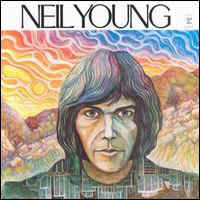
Neil Young - 1969
On his songs for Buffalo Springfield, Neil Young had demonstrated an eclecticism that
ranged from the rock of "Mr. Soul" to the complicated, multi-part arrangement of
"Broken Arrow." On his debut solo album, he continued to work with
composer/arranger Jack Nitzsche, with whom he had made "Expecting to Fly" on the
Buffalo Springfield Again album, and together the two recorded a restrained effort on
which the folk-rock instrumentation, most of which was by Young, overdubbing himself, was
augmented by discreet string parts. The country & western elements that had tinged the
Springfield's sound were also present, notably on the lead-off track, "The Emperor of
Wyoming," an instrumental that recalled the Springfield song "A Child's Claim to
Fame." Still unsure of his voice, Young sang in a becalmed high tenor that could be
haunting as often as it was listless and whining. He was at his least appealing on the
nine-and-a-half-minute closing track, "The Last Trip to Tulsa," on which he
accompanied himself with acoustic guitar, singing an impressionistic set of lyrics
seemingly derived from Bob Dylan's Highway 61 Revisited. But double-tracking and the
addition of a female backup chorus improved the singing elsewhere, and on "The
Loner," the album's most memorable track, Young displayed some of the noisy electric
guitar work that would characterize his recordings with Crazy Horse and reminded listeners
of his ability to turn a phrase. Still, Neil Young made for an uneven, low-key
introduction to Young's solo career, and when released it was a commercial flop, his only
album not to make the charts. (Several months after the album's release, Young remixed it
to bring out his vocals more and added some overdubs. This second version replaced the
first in the U.S. from then on, though the original mix remained available overseas.) -
William Ruhlmann
01 - (2:21) The Emperor Of Wyoming
02 - (3:56) The Loner
03 - (2:24) If I Could Have Her Tonight
04 - (2:37) I've Been Waiting For You
05 - (6:02) The Old Laughing Lady
06 - (1:07) Excerpt From Whiskey Boot Hill
07 - (3:22) Here We Are In The Years
08 - (2:30) What Did You Do To My Life?
09 - (2:43) I've Loved Her So Long
10 - (9:31) The Last Trip To Tulsa

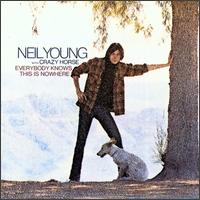
Everybody Knows This Is Nowhere - 1969
Neil Young's second solo album, released only four months after his first, was nearly a
total rejection of that polished effort. Though a couple of songs, "Round Round (It
Won't Be Long)" and "The Losing End (When You're On)," shared that album's
country-folk style, they were altogether livelier and more assured. The difference was
that, while Neil Young was a solo effort, Everybody Knows marked the beginning of Young's
recording association with Crazy Horse, the trio of Danny Whitten (guitar), Ralph Molina
(drums), and Billy Talbot (bass) that Young had drawn from the struggling local Los
Angeles group the Rockets. With them, Young quickly cut a set of loose, guitar-heavy rock
songs - "Cinnamon Girl," "Down by the River," and "Cowgirl in the
Sand" - that redefined him as a rock & roll artist. The songs were deliberately
underwritten and sketchy as compositions, their lyrics more suggestive than complete, but
that made them useful as frames on which to hang the extended improvisations
("River" and "Cowgirl" were each in the nine-to-ten-minute range)
Young played with Crazy Horse and to reflect the ominous tone of his singing. Young
lowered his voice from the near-falsetto employed on his debut to a more expressive range,
and he sang with greater confidence, accompanied by Whitten and, on "Round
Round," by Robin Lane. Everybody Knows This Is Nowhere was breathtakingly different
when it appeared in May 1969, both for Young and for rock in general, and it reversed his
commercial fortunes, becoming a moderate hit. (Young's joining Crosby, Stills & Nash
the month after its release didn't hurt his profile, of course.) A year and a half after
its release, it became a gold album, and it has since gone platinum. And it set a musical
pattern Young and his many musical descendants have followed ever since; almost 30 years
later, he was still playing this sort of music with Crazy Horse, and a lot of contemporary
bands were playing music clearly influenced by it. - William Ruhlmann
1 - (3:01) Cinnamon Girl
2 - (2:30) Everybody Knows This Is Nowhere
3 - (5:55) Round & Round (It Won't Be Long)
4 - (9:19) Down By The River
5 - (4:09) Losing End (When You're On)
6 - (5:38) Running Dry (Requiem For The Rockets)
7 - (10:09) Cowgirl In The Sand

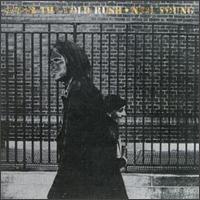
After The Gold Rush - 1970
In the 15 months between the release of Everybody Knows This Is Nowhere and After the
Gold Rush, Neil Young issued a series of recordings in different styles that could have
prepared his listeners for the differences between the two LPs. His two compositions on
the Crosby, Stills, Nash & Young album Déjà Vu, "Helpless" and
"Country Girl," returned him to the folk and country styles he had pursued
before delving into the hard rock of Everybody Knows; two other singles, "Sugar
Mountain" and "Oh, Lonesome Me," also emphasized those roots. But
"Ohio," a CSNY single, rocked as hard as anything on the second album. After the
Gold Rush was recorded with the aid of Nils Lofgren, a 17-year-old unknown whose piano was
a major instrument, turning one of the few real rockers, "Southern Man" (which
had unsparing protest lyrics typical of Phil Ochs), into a more stately effort than
anything on the previous album and giving a classic tone to the title track, a mystical
ballad that featured some of Young's most imaginative lyrics and became one of his most
memorable songs. But much of After the Gold Rush consisted of folk-country love songs,
which consolidated the audience Young had earned through his tours and recordings with
CSNY; its dark yet hopeful tone matched the tenor of the times in 1970, making it one of
the definitive singer/songwriter albums, and it has remained among Young's major
achievements. - William Ruhlmann
01 - (2:59) Tell Me Why
02 - (3:47) After The Gold Rush
03 - (3:09) Only Love Can Break Your Heart
04 - (5:34) Southern Man
05 - (1:21) Till The Morning Comes
06 - (3:51) Oh, Lonesome Me
07 - (2:58) Don't Let It Bring You Down
08 - (2:34) Birds
09 - (4:07) When You Dance You Can Really Love
10 - (3:28) I Believe In You
11 - (1:34) Cripple Creek Ferry


Harvest - 1972
Neil Young's most popular album, Harvest employs a number of jarringly different
styles. Much of it is country-tinged, although there is also an acoustic track, a couple
of electric guitar-drenched rock performances, and two songs on which Young is accompanied
by the London Symphony Orchestra. But the album does have an overall mood and an overall
lyric content, and they conflict with each other: The mood is melancholic, but the songs
mostly describe the longing for and fulfillment of new love. Young's concerns are perhaps
most explicit on the controversial "A Man Needs a Maid," which contrasts the
fears of committing to a relationship with simply living alone and hiring help. Over and
over, he sings of the need for love in such songs as "Out on the Weekend,"
"Heart of Gold," and "Old Man," and the songs are unusually melodic
and accessible; the rock numbers "Are You Ready for the Country" and
"Alabama" are in Young's familiar style and unremarkable, and "There's a
World" and "Words (Between the Lines of Age)" are ponderous and overdone.
But the love songs and the harrowing portrait of a friend's descent into heroin addiction,
"The Needle and the Damage Done," remain among Young's most affecting and
memorable songs. - William Ruhlmann
01 - (4:36) Out On The Weekend
02 - (3:12) Harvest
03 - (4:06) A Man Needs A Maid
04 - (3:08) Heart Of Gold
05 - (3:24) Are You Ready For The Country
06 - (3:26) Old Man
07 - (3:00) There's A World
08 - (4:03) Alabama
09 - (2:04) The Needle And The Damage Done
10 - (6:42) Words (Between The Lines Of Age)

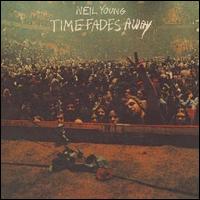
Time Fades Away - 1973
Anyone who has followed Neil Young's career knows enough not to expect a simple evening
of mellow good times when they see him in concert, but in 1973, when Young hit the road
after Harvest had confirmed his status as a first-echelon rock star, that knowledge wasn't
nearly as common as it is today. Young's natural inclinations to travel against the
current of audience expectations were amplified by a stormy relationship between himself
and his touring band, as well as the devastating death of guitarist Danny Whitten, who
died of a drug overdose shortly after being given his pink slip during the first phase of
tour rehearsals. The shows that followed turned into a nightly exorcism of Young's rage
and guilt, as well as a battle between himself and an audience who, expecting to hear
"Old Man" and "Heart of Gold," didn't know what to make of the
electric assault they witnessed. All the more remarkably, Young brought along a mobile
recording truck to capture the tour on tape for a live album and the result, Time Fades
Away, was a ragged musical parade of bad karma and road craziness, opening with Young
bellowing "Fourteen junkies, too weak to work" on the title cut, and closing
with "Last Dance," in which he tells his fans "You can live your own
life" with all the optimism of a man on the deck of a sinking ship. While critics and
fans were not kind to Time Fades Away upon first release, three decades later it sounds
very much of a piece with Tonight's the Night and On the Beach, albums that explored the
troubled zeitgeist of America in the mid-'70s in a way few rockers had the courage to
face. If the performances are often loose and ragged, they're also brimming with emotional
force, and despite the dashed hopes of "Yonder Stands the Sinner" and "Last
Dance," "Don't Be Denied" is a moving remembrance of Young's childhood and
what music has meant to him, and it's one of the most powerful performances Young ever
committed to vinyl. Few rockers have been as willing as Young to lay themselves bare
before their audience, and Time Fades Away ranks with the bravest and most painfully
honest albums of his career - like the tequila Young was drinking on that tour, it isn't
for everyone, but you may be surprised by its powerful effects. - Mark Deming
1 - (5:33) Time Fades Away
2 - (3:12) Journey Through The Past
3 - (3:16) Yonder Stands The Sinner
4 - (3:10) L.A.
5 - (2:01) Love In Mind
6 - (4:59) Don't Be Denied
7 - (2:54) The Bridge
8 - (8:14) Last Dance

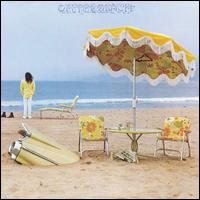
On The Beach - 1974
Following the 1973 Time Fades Away tour, Neil Young wrote and recorded an Irish wake of
a record called Tonight's the Night and went on the road drunkenly playing its songs to
uncomprehending listeners and hostile reviewers. Reprise rejected the record, and Young
went right back and made On the Beach, which shares some of the ragged style of its two
predecessors. But where Time was embattled and Tonight mournful, On the Beach was savage
and, ultimately, triumphant. "I'm a vampire, babe," Young sang, and he proceeded
to take bites out of various subjects: threatening the lives of the stars who lived in
L.A.'s Laurel Canyon ("Revolution Blues"); answering back to Lynyrd Skynyrd,
whose "Sweet Home Alabama" had taken him to task for his criticisms of the South
in "Southern Man" and "Alabama" ("Walk On"); and rejecting
the critics ("Ambulance Blues"). But the barbs were mixed with humor and even
affection, as Young seemed to be emerging from the grief and self-abuse that had plagued
him for two years. But the album was so spare and underproduced, its lyrics so harrowing,
that it was easy to miss Young's conclusion: He was saying goodbye to despair, not being
overwhelmed by it. - William Ruhlmann
1 - (2:44) Walk On
2 - (5:04) About To Rain
3 - (4:03) Revolution Blues
4 - (3:04) For The Turnstiles
5 - (4:06) Vampire Blues
6 - (7:02) On The Beach
7 - (4:28) Motion Pictures (For Carrie)
8 - (9:00) Ambulance Blues

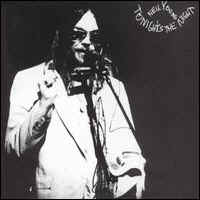
Tonight's The Night - 1975
Written and recorded in 1973 shortly after the death of roadie Bruce Berry, Neil
Young's second close associate to die of a heroin overdose in six months (the first was
Crazy Horse guitarist Danny Whitten), Tonight's the Night was Young's musical expression
of grief, combined with his rejection of the stardom he had achieved in the late '60s and
early '70s. The title track, performed twice, was a direct narrative about Berry:
"Bruce Berry was a working man / He used to load that Econoline van." Whitten
was heard singing "Come on Baby Let's Go Downtown," a live track recorded years
earlier. Elsewhere, Young frequently referred to drug use and used phrases that might have
described his friends, such as the chorus of "Tired Eyes," "He tried to do
his best, but he could not." Performing with the remains of Crazy Horse, bassist
Billy Talbot and drummer Ralph Molina, along with Nils Lofgren (guitar and piano) and Ben
Keith (steel guitar), Young performed in the ragged manner familiar from Time Fades Away -
his voice was often hoarse and he strained to reach high notes, while the playing was
loose, with mistakes and shifting tempos. But the style worked perfectly for the material,
emphasizing the emotional tone of Young's mourning and contrasting with the polished sound
of CSNY and Harvest, which Young also disparaged. He remained unimpressed with his
commercial success, noting in "World on a String," "The world on a string /
Doesn't mean anything." In "Roll Another Number," he said he was "a
million miles away / From that helicopter day" when he and CSN had played Woodstock.
And in "Albuquerque," he said he had been "starvin' to be alone, /
Independent from the scene that I've known" and spoke of his desire to "find
somewhere where they don't care who I am." Songs like "Speakin' Out" and
"New Hama" seemed to find some hope in family life, but Tonight's the Night did
not offer solutions to the personal and professional problems it posed. It was the work of
a man trying to turn his torment into art and doing so unflinchingly. Depending on which
story you believe, Reprise Records rejected it or Young withdrew it from its scheduled
release at the start of 1974 after touring with the material in the U.S. and Europe. In
1975, after a massive CSNY tour, Young at the last minute dumped a newly recorded album
and finally put Tonight's the Night out instead. Though it did not become one of his
bigger commercial successes, the album immediately was recognized as a unique masterpiece
by critics, and it has continued to be ranked as one of the greatest rock & roll
albums ever made. - William Ruhlmann
01 - (4:46) Tonight's The Night
02 - (5:01) Speakin' Out
03 - (2:29) World On A String
04 - (3:30) Borrowed Tune
05 - (3:40) Come On Baby Let's Go Downtown
06 - (3:15) Mellow My Mind
07 - (3:08) Roll Another Number
08 - (4:05) Albuquerque
09 - (2:16) New Mama
10 - (3:58) Lookout Joe
11 - (4:37) Tired Eyes
12 - (4:54) Tonight's The Night Pt. 2

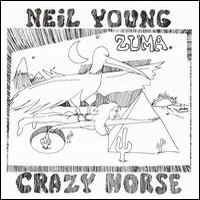
Zuma - 1975
Having apparently exorcised his demons by releasing the cathartic Tonight's the Night,
Neil Young returned to his commercial strengths with Zuma (named after Zuma Beach in Los
Angeles, where he now owned a house). Seven of the album's nine songs were recorded with
the reunited Crazy Horse, in which rhythm guitarist Frank Sampedro had replaced the late
Danny Whitten, but there were also nods to other popular Young styles in "Pardon My
Heart," an acoustic song that would have fit on Harvest, his most popular album, and
"Through My Sails," retrieved from one of Crosby, Stills, Nash & Young's
abortive recording sessions. Young had abandoned the ragged, first-take approach of his
previous three albums, but Crazy Horse would never be a polished act, and the music had a
lively sound well-suited to the songs, which were some of the most melodic, pop-oriented
tunes Young had crafted in years, though they were played with an electric-guitar-drenched
rock intensity. The overall theme concerned romantic conflict, with lyrics that lamented
lost love and sometimes longed for a return ("Pardon My Heart" even found Young
singing, "I don't believe this song"), though the overall conclusion, notably in
such catchy songs as "Don't Cry No Tears" and "Lookin' for a Love,"
was to move on to the next relationship. But the album's standout track (apparently the
only holdover from an early intention to present songs with historical subjects) was the 7
1/2-minute epic "Cortez the Killer," a commentary on the Spanish conqueror of
Latin America that served as a platform for Young's most extensive guitar soloing since
his work on Everybody Knows This Is Nowhere. - William Ruhlmann
1 - (2:38) Don't Cry No Tears
2 - (6:59) Danger Bird
3 - (3:52) Pardon My Heart
4 - (3:20) Lookin' For A Love
5 - (3:05) Barstool Blues
6 - (3:16) Stupid Girl
7 - (3:38) Drive Back
8 - (7:36) Cortez The Killer
9 - (2:41) Through My Sails


Long May You Run - 1976
Long May You Run is not a Neil Young solo album. It is credited to "The
Stills-Young Band," which is to say, Stephen Stills and his band with Young added,
and the two divide up the songwriting and lead vocals, five for Young, four for Stills.
The pairing, though it proved short-lived and had, in fact, ended before this album was
released, must have seemed commercially logical. Like Young, Stills had seen his record
sales decline after a successful period following the 1970 breakup of CSNY. So had
erstwhile partners David Crosby and Graham Nash, but they had returned to Top Ten,
gold-selling status in the fall of 1975 with their Wind on the Water duo album. Why
couldn't Stills and Young do the same thing? Maybe they could have (and, actually, this
was the first gold album for either in two years) if they had made a better record
together. Young's songs were pleasant newly written throwaways with the exception of the
title track, a trunk song he had written as a tribute to an old car. Stills' compositions
seemed more seriously intended, but still were not substantial. The playing, largely
handled by the professional sessionman-types in Stills' band, was far smoother than what
one was accustomed to in a Young album. The result was a listenable record, but not a
compelling one, and thus well below Young's usual standard and Stills' best. - William
Ruhlmann
1 - (3:55) Long May You Run
2 - (5:14) Make Love To You
3 - (3:59) Midnight On The Bay
4 - (4:45) Black Coral
5 - (3:21) Ocean Girl
6 - (4:48) Let It Shine
7 - (3:44) 12/8 Blues
8 - (4:02) Fontainebleau
9 - (5:42) Guardian Angel

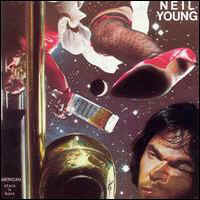
American Stars And Bars - 1977
Neil Young made a point of listing the recording dates of the songs on American Stars
'N Bars; the dates even appeared on the LP labels. They revealed that the songs had been
cut at four different sessions dating back to 1974. But even without such documentation,
it would have been easy to tell that the album was a stylistic hodgepodge, its first side
consisting of country-tinged material featuring steel guitar and fiddle, plus backup
vocals from Linda Ronstadt and the then-unknown Nicolette Larson, while the four songs on
the second side varied from acoustic solo numbers like "Will to Love" to raging
rockers such as "Like a Hurricane." Just as apparent was the album's unevenness:
side one consisted of lightweight compositions, while side two had more ambitious ones,
with "Will to Love," for example, extending the romantic metaphor of a salmon
swimming upsteam across seven minutes. The album's saving grace was "Like a
Hurricane," one of Young's classic hard rock songs and guitar workouts, a perennial
concert favorite. Without it, American Stars 'N Bars would have been one of Young's least
memorable albums, and since it turned up the following year on the compilation Decade, the
LP was rendered inessential. - William Ruhlmann
01 - (3:03) The Old Country Waltz
02 - (2:58) Saddle Up The Palamino
03 - (3:35) Hey Babe
04 - (4:22) Hold Back The Tears
05 - (3:32) Bite The Bullet
06 - (2:19) Homegrown
07 - (2:41) Star Of Bethlehem
08 - (7:09) Will To Love
09 - (8:23) Like A Hurricane
10 - (2:16) Homegrown

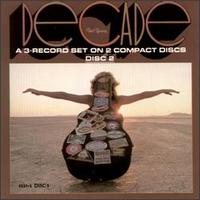
Decade - 1977
Given the quirkiness of Neil Young's recording career, with its frequent cancellations
of releases and last-minute rearrangements of material, it is a relief to report that this
two-disc compilation is so conventional and so satisfying. A 35-track selection of the
best of Young's work between 1966 and 1976, it includes songs performed by Buffalo
Springfield, Crosby, Stills, Nash & Young, and the Stills/Young Band, as well as solo
work. In addition to five unreleased songs, Decade offers such key tracks as the
Springfield's "Mr. Soul," "Broken Arrow," and "I Am a
Child"; "Sugar Mountain," a song that had appeared only as a single before;
"Cinnamon Girl," "Down by the River," and "Cowgirl in the
Sand" from Everybody Knows This Is Nowhere; "Southern Man" and the title
track from After the Gold Rush; and "Old Man" and the chart-topping "Heart
of Gold" from Harvest. This is the material that built Young's reputation between
1966 and 1972, although he is more idiosyncratic with the later material, including the
blockbusters "Like a Hurricane" and "Cortez the Killer" but mixing in
more unreleased recordings as the set draws to a close. He seems intent on making the
album a listenable one that will appeal to a broad base of fans, and he succeeds despite
the exclusion of much of the harrowing work of 1973-1975. Nevertheless, the album is an
ideal sampler for new listeners, and since there is no one-disc Young compilation covering
any significant portion of his career, this lengthy chronicle is the place to start. -
William Ruhlmann
Disc 1
01 - (2:30) Down To The Wire
02 - (2:16) Burned
03 - (2:51) Mr. Soul
04 - (6:15) Broken Arrow
05 - (3:47) Expecting To Fly
06 - (5:43) Sugar Mountain
07 - (2:21) I Am A Child
08 - (3:51) The Loner
09 - (5:39) The Old Laughing Lady
10 - (3:01) Cinnamon Girl
11 - (9:02) Down By The River
12 - (10:05) Cowgirl In The Sand
13 - (3:29) I Believe In You
14 - (3:47) After The Gold Rush
15 - (5:31) Southern Man
16 - (3:34) Helpless
Disc 2
01 - (2:59) Ohio
02 - (2:30) Soldier
03 - (3:23) Old Man
04 - (4:02) A Man Needs A Maid
05 - (3:10) Harvest
06 - (3:08) Heart Of Gold
07 - (2:44) Star Of Bethlehem
08 - (2:06) The Needle And The Damage Done
09 - (4:43) Tonight's The Night Pt 1
10 - (4:34) Tired Eyes
11 - (2:42) Walk On
12 - (3:02) For The Turnstiles
13 - (3:09) Winterlong
14 - (3:43) Deep Forbidden Lake
15 - (8:19) Like A Hurricane
16 - (2:17) Love Is A Rose
17 - (7:34) Cortez The Killer
18 - (3:31) Campaigner
19 - (3:49) Long May You Run

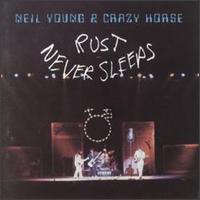
Rust Never Sleeps - 1979
Rust Never Sleeps, its aphoristic title drawn from an intended advertising slogan, was
an album of new songs, some of them recorded on Neil Young's 1978 concert tour. His
strongest collection since Tonight's the Night, its obvious antecedent was Bob Dylan's
Bringing It All Back Home, and, as Dylan did, Young divided his record into acoustic and
electric sides while filling his songs with wildly imaginative imagery. The leadoff track,
"My My, Hey Hey (Out of the Blue)" (repeated in an electric version at album's
end as "Hey Hey, My My [Into the Black]" with slightly altered lyrics), is the
most concise and knowing description of the entertainment industry ever written; it was
followed by "Thrasher," which describes Young's parallel artistic quest in an
extended metaphor that also reflected the album's overall theme - the inevitability of
deterioration and the challenge of overcoming it. Young then spent the rest of the album
demonstrating that his chief weapons against rusting were his imagination and his daring,
creating an archetypal album that encapsulated his many styles on a single disc with great
songs - in particular the remarkable "Powderfinger" - unlike any he had written
before. - William Ruhlmann
1 - (3:49) My My, Hey Hey (Out Of The Blue) [Live]
2 - (5:42) Thrasher [Live]
3 - (2:31) Ride My Llama [Live]
4 - (3:25) Pocahontas [Live]
5 - (3:51) Sail Away [Live]
6 - (5:32) Powderfinger [Live]
7 - (3:50) Welfare Mothers [Live]
8 - (4:41) Sedan Delivery [Live]
9 - (5:15) Hey Hey, My My (Into The Black) [Live]

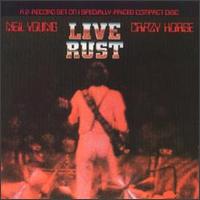
Live Rust - 1979
All the kudos Neil Young earned for Rust Never Sleeps he lost for Live Rust, the
double-LP live album released four months later. Live Rust was the soundtrack to Young's
concert film, Rust Never Sleeps (he had wanted to give it that title, but Reprise vetoed
the idea, fearing confusion with the earlier album), and likewise was recorded Oct. 22,
1978, at the Cow Palace in San Francisco. But much of the Rust Never Sleeps album had been
recorded on the same tour, and Live Rust repeated four songs from that disc; besides,
since Young had released the career retrospective Decade in 1977, critics felt he was
unfairly recycling his older material and repeating his new material. In retrospect,
however, Live Rust, now a single 74-minute CD, comes off as an excellent Neil Young live
album and career summary, starting with the early song "Sugar Mountain" and
running through then-new songs like "My My, Hey Hey (Out of the Blue)" and
"Powderfinger." Young is effective in both his acoustic folk singer and
hard-rocking Crazy Horse bandleader modes. The various distractions of the concert itself
and the film, such as the pretentious props and cowled roadies, are absent, and what's
left is a terrific Neil Young concert recording. - William Ruhlmann
01 - (5:03) Sugar Mountain [Live]
02 - (3:02) I Am A Child [Live]
03 - (3:16) Comes A Time [Live]
04 - (3:49) After The Gold Rush [Live]
05 - (4:13) My My, Hey Hey (Out Of The Blue) [Live]
06 - (3:43) When You Dance You Can Really Love [Live]
07 - (4:54) The Loner [Live]
08 - (3:07) The Needle And The Damage Done [Live]
09 - (2:53) Lotta Love [Live]
10 - (4:51) Sedan Delivery [Live]
11 - (5:45) Powderfinger [Live]
12 - (6:21) Cortez The Killer [Live]
13 - (3:23) Cinnamon Girl [Live]
14 - (8:05) Like A Hurricane [Live]
15 - (4:38) Hey Hey, My My (Into The Black) [Live]
16 - (7:14) Tonight's The Night [Live]

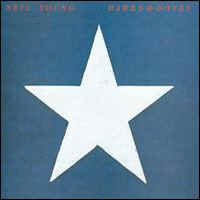
Hawks & Doves - 1980
Following the triumph of Rust Never Sleeps, Hawks & Doves benefited from the
enormous critical goodwill Neil Young had amassed, though fans and critics nevertheless
were baffled by its set of obscure acoustic and country-tinged songs. The
seven-plus-minute "The Old Homestead" (copyright 1974) was interpreted by some
as an allegory for Young's relationship to CSNY, perhaps because that was the only way to
make any sense of the most mysterious Young lyric since "The Last Trip to
Tulsa." In retrospect, now that we know Young was distracted by domestic medical
concerns while working on the album, its theme of perseverance in the face of adversity,
both in a personal context of family commitment ("Stayin' Power,"
"Coastline"), and in a national context of hard work and patriotism ("Union
Man," "Comin' Apart at Every Nail," "Hawks & Doves") seems
more apparent, as does the sense that Young may have been trying to fulfill his recording
contract (even with the inclusion of trunk songs like "The Old Homestead," the
album runs less than half an hour) while devoting a bare minimum of his time and attention
to the effort. The result is correspondingly slight. - William Ruhlmann
1 - (2:10) Little Wing
2 - (7:36) The Old Homestead
3 - (4:19) Lost In Space
4 - (2:50) Captain Kennedy
5 - (2:21) Stayin' Power
6 - (2:28) Coastline
7 - (2:11) Union Man
8 - (2:37) Comin' Apart At Every Nail
9 - (3:27) Hawkes & Doves

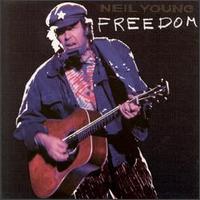
Freedom - 1989
Neil Young is famous for scrapping completed albums and substituting hastily recorded
ones in radically different styles. Freedom, which was a major critical and commercial
comeback after a decade that had confused reviewers and fans, seemed to be a selection of
the best tracks from several different unissued Young projects. First and foremost was a
hard-rock album like the material heard on Young's recent EP Eldorado (released only in
the Far East), several of whose tracks were repeated on Freedom. On these songs-especially
"Don't Cry," awhich sounded like a song about divorce, and a cover of the old
Drifters hit "On Broadway" that he concluded by raving about crack-Young played
distorted electric guitar over a rhythm section in an even more raucous fashion than that
heard on his Crazy Horse records. Second was a followup to Young's previous album, This
Note's For You, which had featured a six-piece horn section. They were back on "Crime
In The City" and "Someday," though these lengthy songs, each of which
contained a series of seemingly unrelated, mood-setting verses, were more reminiscent of
songs like Bob Dylan's "All Along The Watchtower" than of the soul standards
that inspired the earlier album. Third, there were tracks that harked back to
acoustic-based, country-tinged albums like Harvest and Comes A Time, including
"Hangin' On A Limb" and "The Ways Of Love," two songs on which Young
duetted with Linda Ronstadt. There was even a trunk (or, more precisely, a drunk) song,
"Too Far Gone," which dated from Young's inebriated Stars 'N Bars period in the
'70s. While one might argue that this variety meant few Young fans would be completely
pleased with the album, what made it all work was that Young had once again written a
great bunch of songs. The romantic numbers were carefully and sincerely written. The long
imagistic songs were evocative without being obvious. And bookending the album were
acoustic and electric versions of one of Young's great anthems, "Rockin' In The Free
World," a song that went a long way toward restoring his political reputation (which
had been badly damaged when he praised President Reagan's foreign policy) by taking on
hopelessness with a sense of moral outrage and explicitly condemning President Bush's
domestic policy. Freedom was the album Neil Young fans knew he was capable of making, but
feared he would never make again. - William Ruhlmann
01 - (3:41) Rockin' In The Free World
02 - (8:47) Crime In The City (Sixty To Zero Pt 1)
03 - (4:17) Don't Cry
04 - (4:20) Hangin' On A Limb
05 - (6:07) Eldorado
06 - (4:31) The Ways Of Love
07 - (5:44) Someday
08 - (5:00) On Broadway
09 - (5:11) Wrecking Ball
10 - (6:08) No More
11 - (2:49) Too Far Gone
12 - (4:43) Rockin' In The Free World

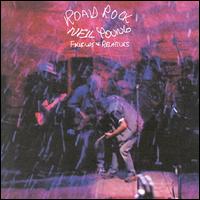
Road Rock Vol. 1 - 2000
For some reason, Neil decided that his 2000 tour was particularly hot, so he decided to
record a live album and rush release it by the end of the year. So, that explains the
appearance of Road Rock, Vol. 1, an eight-song collection recorded with an ensemble
featuring Spooner Oldham on keyboards, Duck Dunn on bass, Jim Keltner on drums, and Astrid
and Pegi Young on vocals - thereby explaining the "Friends and Relatives"
subtitle. This band is pretty good, even supple, but this doesn't feel necessary at any
time and suffers from indulgence. And it doesn't shy away from this indulgence, either,
opening with an 18-minute "Cowgirl in the Sand" that only diehards could sit
through. And, in a sense, that summarizes this album, since only diehards will thrill to
an 11-minute "Words," a previously unreleased "Fool for Your Love," a
10-minute "Tonight's the Night," or an "All Along the Watchtower"
featuring opener Chrissie Hynde on guitar. This isn't bad, but it's not really good,
either, and as the third live album in one decade, it's not just anticlimatic, it's
unnecessary even for diehards, who probably would find this more exciting as a bootleg
than an official album. - Stephen Thomas Erlewine
1 - (8:13) All Along The Watchtower [Live] - Chrissie Hynde / Neil Young
2 - (18:16) Cowgirl In The Sand [Live]
3 - (4:02) Walk On [Live]
4 - (3:21) Fool For Your Love [Live]
5 - (4:53) Peace Of Mind [Live]
6 - (11:10) Words (Between The Lines Of Age) [Live]
7 - (4:13) Motorcycle Mama [Live]
8 - (10:37) Tonight's The Night [Live]

|